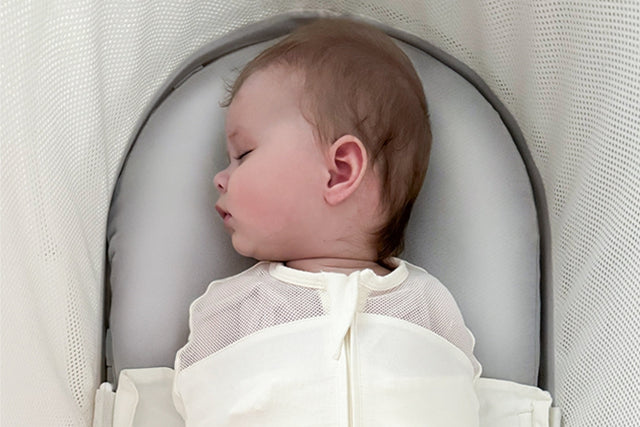How to Care for Your Baby’s Hair

Whether your baby was born with a full head of hair or just a whisper of fuzz, you might be wondering how to take care of those delicate strands. While newborn hair doesn’t require a complicated routine (the blowout bar will have to wait!), knowing how to clean, style, and protect it can help keep your little one’s scalp healthy and hair looking (and feeling!) its best.
How often should you wash your baby's hair?
Newborns don’t need daily hair washing. In fact, washing baby’s hair too often can dry out their sensitive scalp. The American Academy of Pediatrics (AAP) recommends bathing your baby—including shampooing their hair—no more than three times a week during the first year, unless they have a specific skin condition or heavy buildup.
If your baby has cradle cap, washing more frequently with a gentle shampoo can help loosen the flakes. Treat really tough scales by massaging a little coconut oil or petroleum jelly into the scalp (learn more about how to handle cradle cap). And, of course, follow up with your healthcare provider if it doesn’t improve!
How to Care for a Baby’s Hair
Choose gentle hair products.
Choose a tear-free, fragrance-free baby shampoo formulated for sensitive skin. Adult hair products can contain ingredients that are too harsh for a baby’s delicate scalp. Steer clear of shampoos with added fragrances, preservatives like parabens, and dyes—all of which can irritate the skin or cause allergic reactions.
Brush with care.
A soft-bristle baby brush can help gently remove loose hairs and distribute natural oils. Brushing also stimulates the scalp and can help reduce the appearance of cradle cap by loosening flakes before a bath.
Limit styling and accessories.
As tempting as it is to try a cute bow or tiny ponytail, it’s best to skip styles that tug at the hair or put pressure on the scalp. Tight styles and frequent use of elastic bands can cause breakage or even a type of hair loss known as traction alopecia.
Prevent baby hair breakage with silk.
Lay your baby to sleep on silk! Traditional sheets can cause friction as your baby moves their head from side to side during sleep. This rubbing—especially on the back of the head—can lead to hair breakage or bald spots.
On the flip side, the friction-reducing benefits of silk have been recognized in dermatology for protecting fragile hair and sensitive skin. Our pediatrician-designed SNOO Silk Sheet is made from Lunya’s washable Mulberry silk, which is not only gentle on a baby’s strands, but is also hypoallergenic, naturally thermoregulating, and a breeze to clean (simply throw it in the wash!).
Encourage tummy time.
Tummy time helps your baby build muscle strength and coordination—and it also reduces pressure on the back of the head. The Centers for Disease Control and Prevention (CDC) recommends supervised tummy time daily, beginning soon after birth. That pressure relief can help prevent both hair rubbing and flat spots on the head.
Don’t stress about newborn hair loss!
It’s normal for babies to lose hair in the early weeks. Hormonal shifts after birth often cause shedding, which usually resolves on its own by 6 months of age. Hair that falls out is often replaced by new growth, which might look completely different in texture or color.
By sticking with a gentle haircare routine, using appropriate products, and minimizing friction, you can help keep your newborn’s hair and scalp healthy—and maybe even preserve those precious baby curls a little longer.
More on Baby Care:
***
REFERENCES
- The American Academy of Pediatrics: Bathing Your Baby
- The American Academy of Pediatrics: What is Cradle Cap?
- The American Academy of Pediatrics: How to Choose Safer Personal Care Products: Tips for Families
- The American Academy of Pediatrics: Hair Loss (Alopecia) in Children
- Centers for Disease Control and Prevention: Important Milestones: Your Baby By Two Months
View more posts tagged, baby care
Have questions about a Happiest Baby product? Our consultants would be happy to help! Submit your questions here.